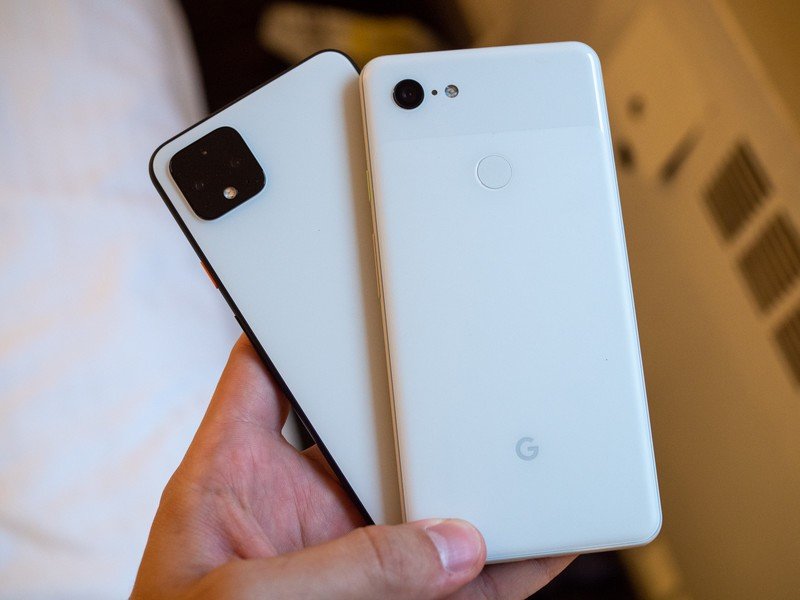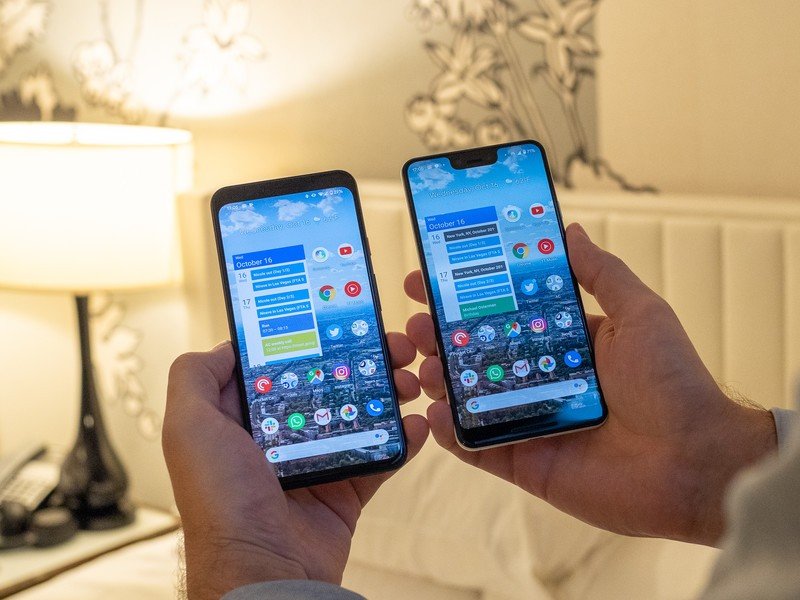Google Pixel 4 XL vs. Google Pixel 3 XL: Should you upgrade?

Google Pixel 4 XL

The Pixel 4 XL has fresh specs, a much better display with 90Hz refresh rate, and an improved rear camera. But it also has many components and features that are unchanged from the 3 XL, with features like Motion Sense and face unlock that are a bit of a mixed experience.
Google Pixel 4 XL
New hotness
Google Pixel 3 XL

The Pixel 3 XL still has solid hardware, runs Android 10 very well, and has exceptional cameras even if they're not exaclty as good as the 4 XL. But its display really hasn't aged well, nor has its 4GB of RAM.
Google Pixel 3 XL
Good but fading
What does the Pixel 4 XL have over the Pixel 3 XL?






Google isn't known for making huge upgrades from year to year, nor is it ever really pushing the envelope of specs, but there are lots of improvements to be seen in the move from the Pixel 3 XL to Pixel 4 XL. Specs-wise you're getting a new faster and more efficient Snapdragon 855 platform, paired with 6GB of RAM to help with multitasking now and further into the future than the 3 XL's anemic 4GB. The battery has also been bumped to 3700mAh, providing a little more longevity.
There are lots of subtle improvements in specs that add up to a fresh experience.
The hardware is still typical Google, making subtle changes from the 3 XL. You get new color combinations, and a fresh metal frame that provides a bit more grip — it looks and feels great, but so does the 3 XL. The bigger hardware change is the display, which is the same size but no longer has an unsightly notch. And more importantly, it's brighter, more colorful, and has a super-smooth 90Hz refresh rate that makes everything in the software look even better.
That top display bezel holds a Project Soli sensor, which enables Motion Sense gestures you don't have on any prior Pixel. At launch there's very little you can do with the tech, which lets you wave your hand over the phone to control calls, alarms and media playback — but there's potential here for Google to make additions and improvements down the road. It doesn't make the Pixel 4 XL worth buying on its own, but it's something new.
Specs-wise the rear camera looks familiar, but Google has made big moves in camera quality. The Pixel 4 XL's camera beats out the 3 XL in most areas even just shooting in automatic mode, which is impressive. It's also paired up with a telephoto camera that gives improved zoom quality and portrait mode. Some improvements can and will come to the Pixel 3 XL's camera with software updates, but the Pixel 4 will always be ahead.
| Header Cell - Column 0 | Google Pixel 4 XL | Google Pixel 3 XL |
|---|---|---|
| Operating System | Android 10 | Android 10 |
| Display | 6.3-inch OLED3040x1440 (19:9)90Hz | 6.3-inch OLED2960x1440 (18.5:9) |
| Processor | Qualcomm Snapdragon 855Pixel Neural Core | Qualcomm Snapdragon 845Pixel Visual Core |
| Memory | 6GB | 4GB |
| Storage | 64/128GB | 64/128GB |
| Expandable | n/a | n/a |
| Rear Camera 1 | 12.2MP, 1.4µm, f/1.7, OISPDAF | 12.2MP, 1.4µm, f/1.8, OISPDAF |
| Rear Camera 2 | 16MP, 1.0µm, f/2.4telephoto | n/a |
| Front Camera 1 | 8MP, f/2.0, fixed focus90-degree lens | 8MP, f/1.8, auto focus75-degree lens |
| Front Camera 2 | n/a | 8MP, f/2.2, fixed focus97-degree lens |
| Security | Face unlock | Capacitive fingerprint sensor |
| Ports | USB-C | USB-C |
| Audio | Stereo speakersUSB-C | Stereo speakersUSB-C |
| Battery | 3700mAh | 3430mAh |
| Charging | 18W USB-C PDQi wireless | 18W USB-C PDQi wireless |
| Water Resistance | IP68 | IP68 |
| Dimensions | 160.4 x 75.1 x 8.2 mm193g | 158 x 76.7 x 7.9 mm184 g |
There are many areas Google stood still, or arguably moved backward.
With all of that improvement, there are many areas Google stood still, or arguably moved backward. The storage options stayed at 64 or 128GB, and both wired and wireless charging speeds didn't improve. There's a single 90-degree field-of-view front-facing camera now, rather than the pair of 75- and 97-degree lenses before — and the single camera doesn't have auto focus.
Be an expert in 5 minutes
Get the latest news from Android Central, your trusted companion in the world of Android
And the biggest change to usability with the Pixel 4 XL is the removal of a fingerprint sensor. The new face unlock system is secure and fast, but in order for it to work as an unlock method for your apps the developers need to update to the latest biometrics APIs — which a vast majority have not. It may take weeks or months to reach the point where all of your most-used apps can be unlocked with face unlock, whereas the Pixel 3 XL keeps using a standard fingerprint sensor that every app supports. That should at least make you consider delaying your Pixel 4 XL upgrade if your daily routine involves frequent unlocking of apps.
Should you upgrade to a Pixel 4 XL?
How much are you willing to pay for the same core experience with a bunch of subtle improvements?
Making a year-on upgrade within the same phone line is usually pretty easy. The Pixel 4 XL has new features, fresh specs and solid yearly improvements to the display quality and hardware design. But it follows the same basic philosophy as the Pixel 3 XL, with the same core software experience and a few wholly new features. If you love the way your Pixel 3 XL looks and feels, and enjoy Google's clean take on software, but you feel it's getting a little long in the tooth, the 4 XL is a great upgrade.
You still have to pay for it, of course, and that will make you question the value in what the 4 XL offers. A new face unlock system, improved camera, fresh hardware and better specs are all good, but the outlay will be hundreds of dollars to upgrade. Even if you see enough value in the Pixel 4 XL's notable improvements, face unlock's incompatibility with many apps should give you pause. This comes down to how much you like your current Pixel's experience, and how much you're willing to pay to keep that while getting a relatively subtle improvement to many features.
Andrew was an Executive Editor, U.S. at Android Central between 2012 and 2020.


